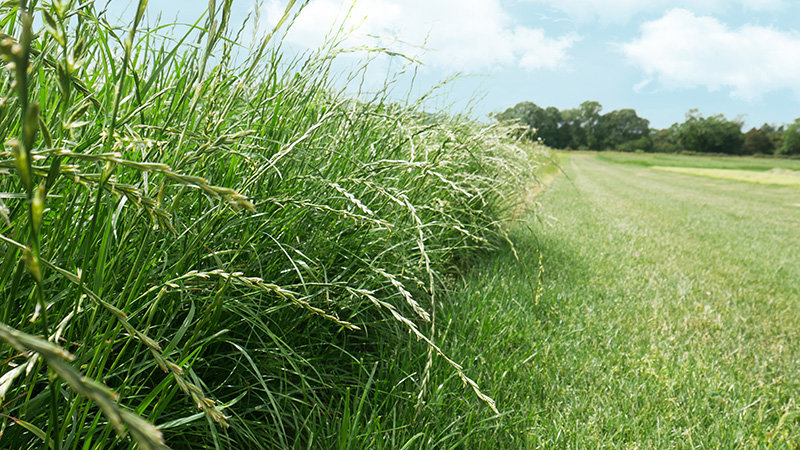A late tetraploid variety, Killylea has been specially bred at AFBI Loughgall to suit the requirements and expectations of growers in Northern Ireland, making it a potent substitute for ‘standard’ UK-wide varieties in any seed mixture, notes David Linton, the company’s UK Agriculture Commercial Manager.
“What we have in Killylea is another example of Barenburg’s UK-focused grass-breeding strategy,” he says, “where we’re breeding UK varieties for a UK fit on UK farms.
“First advanced for trialling in 2011, Killylea performs above the reference variety. While it can be quite a decision to switch from an established and familiar variety, with Killylea there’s no compromise of the high standards growers and merchants expect from a high-performing late tetraploid.”
David points to Killylea’s visible resilience in mixtures with other grass varieties. “We see Killylea – with its traits specially selected for local conditions and grower expectations – as having the potential to replace other UK-wide varieties in mixtures, ultimately providing growers with more robust and better-performing grass.”
New grass varieties usually spend between 15 and 17 years in development, after the initial cross. Killylea is no exception: its stand-out traits were first recognised in 2006. It’s one of nearly 50 grass varieties that have made it to the UK’s Recommended Lists during the 32-year breeding partnership between Barenbrug and the AgriFood and Biosciences Breeding Institute in Northern Ireland.
Another exciting variety available next year is Tollymore, an intermediate tetraploid that ‘ticks all the boxes’ with its yield and quality performance in both silage and grazing swards. With conservation yield equal to Seagoe, and fantastic yield and quality under grazing, it is a variety that will find a comfortable fit in all farming systems.
“We are very excited about Tollymore. Growers who’ve trialled it described it as ‘a grass that blows your socks off’,” David enthuses.




